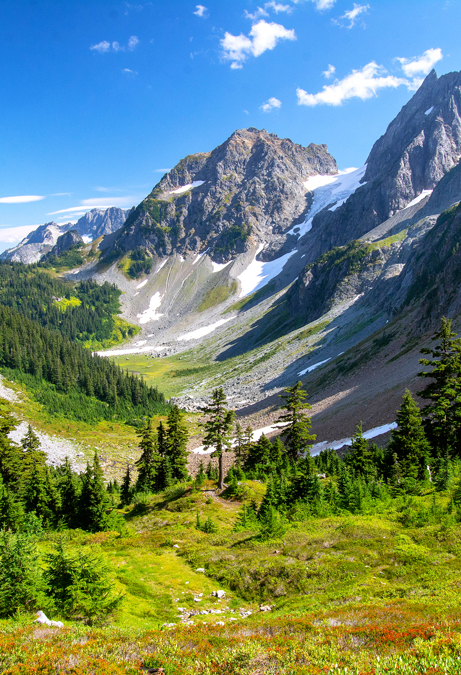In 2023, a staggering 325.5 million recreational visits were recorded at the 400 national park sites spread throughout the United States and its territories. While some big hitters, such as Great Smoky Mountains National Park and Grand Canyon National Park, receive millions of tourists annually, other national parks welcome far fewer visitors. So, if you’re looking for magnificent landscapes and majestic wildlife with a little extra solitude, check out America’s 10 least-visited national parks.
10. Great Basin National Park – Nevada (143,265 Visitors)

The 77,000 acres that make up Nevada’s Great Basin National Park are marked by extreme contrasts. Visitors can wander through ancient caves and bristlecone pine forests or hike alongside alpine lakes or 13,063-foot-tall Wheeler Peak, the second-highest mountain in Nevada.
Schedule a guided tour of Lehman Caves to see 300 shield formations and mesmerizing speleothem mineral deposits, or check out the Wheeler Peak Scenic Drive Trails, which range from easy walks to high-altitude climbs. This area of the park also has some of the best wildflower viewing. Since 2016, the park has been a designated International Dark Sky Park, making it prime for observing meteor showers and the Milky Way. If you visit for stargazing, be sure to visit the Astronomy Amphitheater, located near Lehman Caves.
9. Dry Tortugas National Park – Florida (84,285 Visitors)
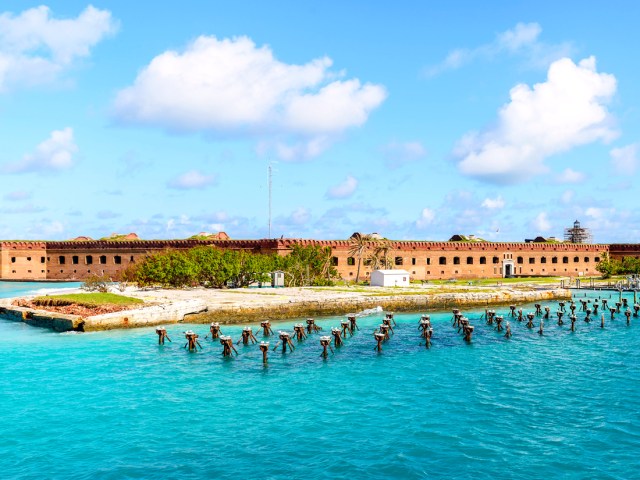
Reachable only by boat or seaplane, Dry Tortugas National Park consists of seven keys, located about 70 miles west of Key West and surrounded by the wildlife-rich waters of the Gulf of Mexico. Snorkelers and scuba divers can spot brightly colored sea creatures around the Windjammer shipwreck and Little Africa Patch. Besides the wildlife found underwater, some 200 bird species pass through the park during the spring migration.
Garden Key, the biggest island, houses historic Fort Jefferson, the largest masonry fort in the Western Hemisphere. It was built in 1846 as a deepwater anchorage and later converted into a military prison; it is now open year-round to visitors.
8. Wrangell-St. Elias National Park and Preserve – Alaska (78,305 Visitors)
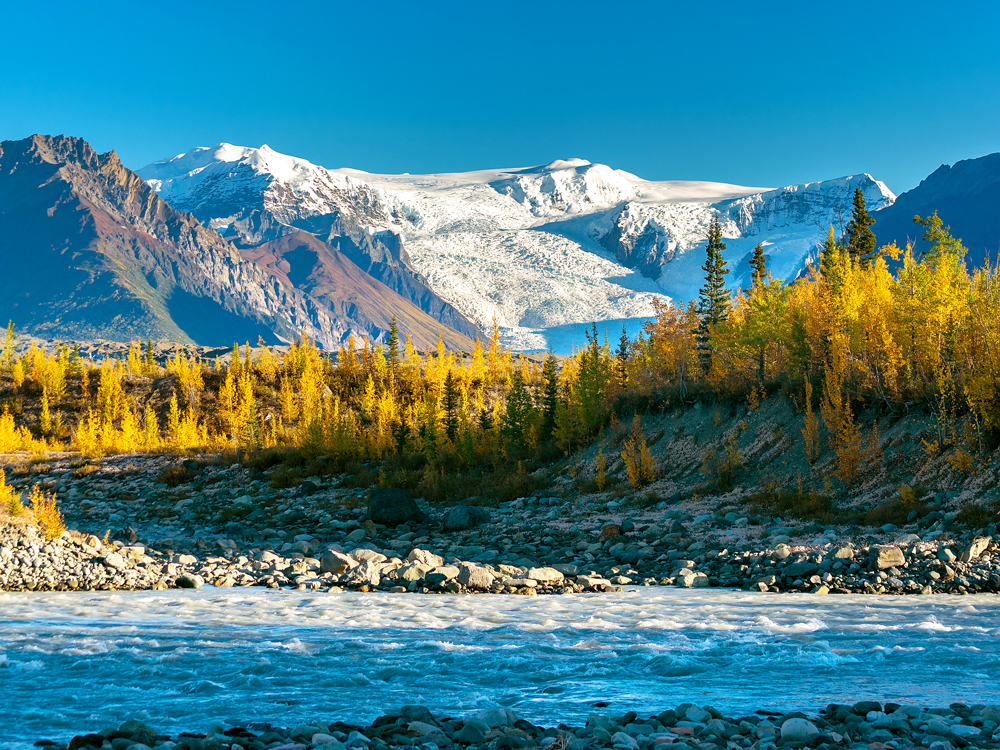
Stretching over 13.2 million acres — from the Gulf of Alaska to 18,008-foot-tall Mount St. Elias — Wrangell-St Elias National Park and Preserve is one of the world’s largest national parks. It also shelters seven of America’s 20 tallest peaks. Much of the park is backcountry, but that doesn’t limit your opportunities to get out into nature. Summertime is ideal for backpacking, day hiking, and boating on glacial rivers, while winters are great for cross-country skiing and snowshoeing. You’ll be sharing the wilderness with varied wildlife such as bald eagles, brown bears, and caribou. A trip to the nearby Kennecot ghost town is also a must to see the remains of a once-thriving mining camp.
7. North Cascades National Park – Washington (40,351 Visitors)

In northern Washington state, North Cascades National Park boasts the highest concentration of glaciers in the lower 48 — there are over 300 glaciers within park boundaries. In addition, more than 400 miles of trails make this a paradise for day hiking and multi-day treks. While the park is accessible year-round, the busiest season is from April to October. Stehekin, located on Lake Chelan, is a great base for expeditions, including short walks through lush forests and a challenging hike up McGregor Mountain. Those who prefer to explore via pedal power will find scenic cycling routes on the North Cascades Highway and Stehekin Valley Road.
6. Katmai National Park and Preserve – Alaska (33,763 Visitors)
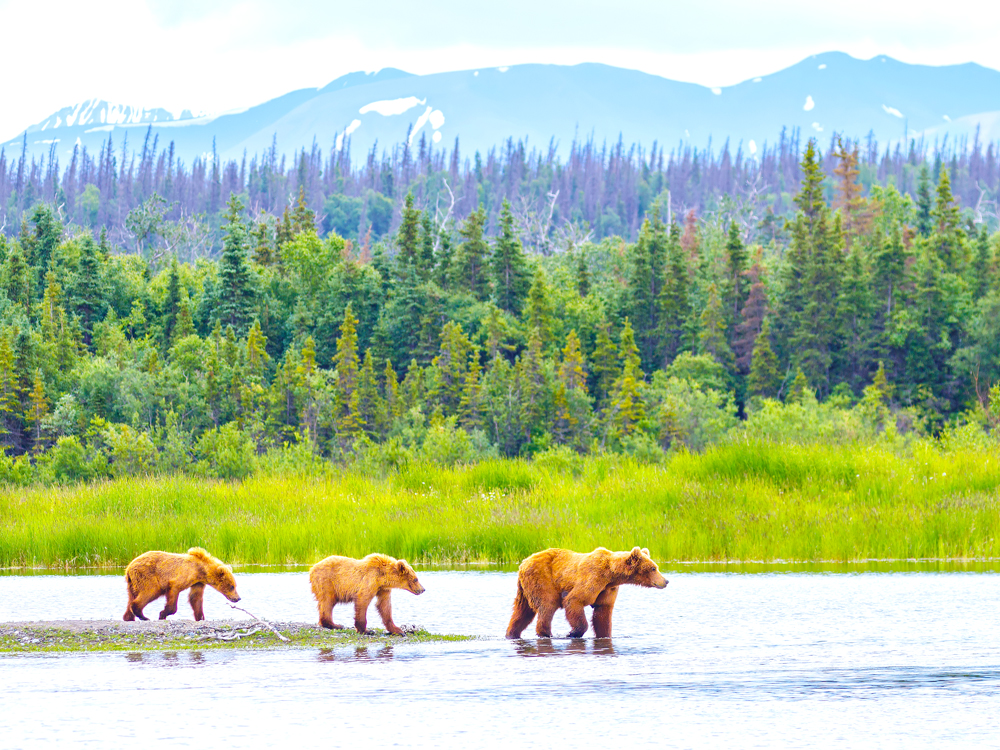
Set on a peninsula south of Anchorage, Katmai National Park and Preserve ranks among the premier bear-spotting destinations in the United States. Around 2,200 brown bears inhabit the park, with many gathering at Brooks Camp (the most popular viewing spot) in the summer to feast on salmon. On a good day, a dominant male brown bear will eat up to 30 fish.
Brooks Camp is also the starting point for the park’s most popular adventures. They include hiking up Dumpling Mountain, kayaking the 80-mile Savonoski Loop, and backpacking in the Valley of Ten Thousand Smokes, the latter of which provides intimate encounters with ash-covered volcano slopes and glaciers.
5. Isle Royale National Park – Michigan (28,965 Visitors)
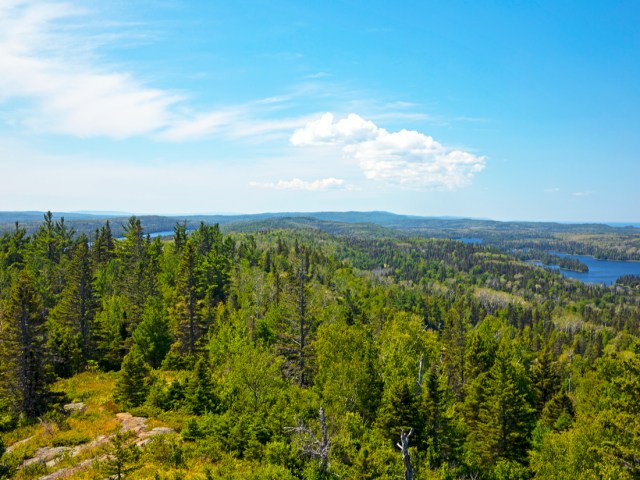
Isle Royale National Park is made up of a cluster of islands located in Lake Superior, close to the Canadian border. Cars are banned from the islands, so the only way in is by boat or seaplane from lake towns in Michigan and Minnesota. It’s also the only national park to fully close in the winter, which helps to explain its low annual visitation numbers.
Once here, visitors can explore a serene island wilderness via 165 miles of marked trails and 30 campgrounds for overnight stays. Favorite spots for uninterrupted island views include Grace Creek Overlook and Minong Ridge Overlook. Don’t miss the Greenstone Ridge Trail, a 40-mile backpacking route linking backcountry lakes and campgrounds on the main island.
4. Kobuk Valley National Park – Alaska (17,616 Visitors)

Life in Kobuk Valley National Park, located just north of the Arctic Circle, is centered around the Kobuk River, an ancient corridor for caribou migration. Humans have been coming to a riverside site called Onion Portage for over 9,000 years to hunt the caribou. Despite a lack of facilities, the park offers an abundance of outdoor pursuits — including boating on the Kobuk River, climbing the Baird Mountains, and hiking across the towering Kobuk River Sand Dunes. In addition to the emblematic caribou, the park welcomes more than 100 bird species from all seven continents.
3. Lake Clark National Park and Preserve – Alaska (16,728 Visitors)
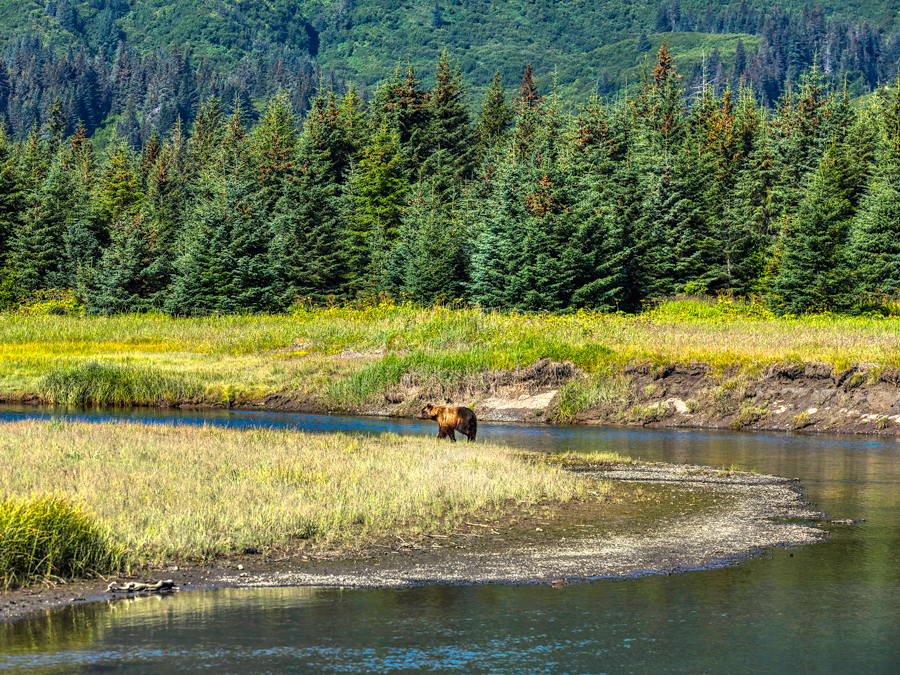
Occupying 4 million acres, Lake Clark National Park and Preserve is a land of active volcanoes, mystical mountains, remote lakes, and meandering coastlines. The Dena’ina Athabascan peoples have called this area home for thousands of years.
Delve into their history at the Quk’ Taz’un (“The Sun Is Rising”) learning camp and walk in their ancestral footsteps on the Telaquana Route — a five-to-seven-day trip from Telaquana Lake to Kijik Village on Lake Clark that requires good map-reading and wayfinding skills. The park also features three designated Wild Rivers and two National Natural Landmark volcanoes, both of which rise over 10,000 feet.
2. National Park of American Samoa – American Samoa (12,135 Visitors)
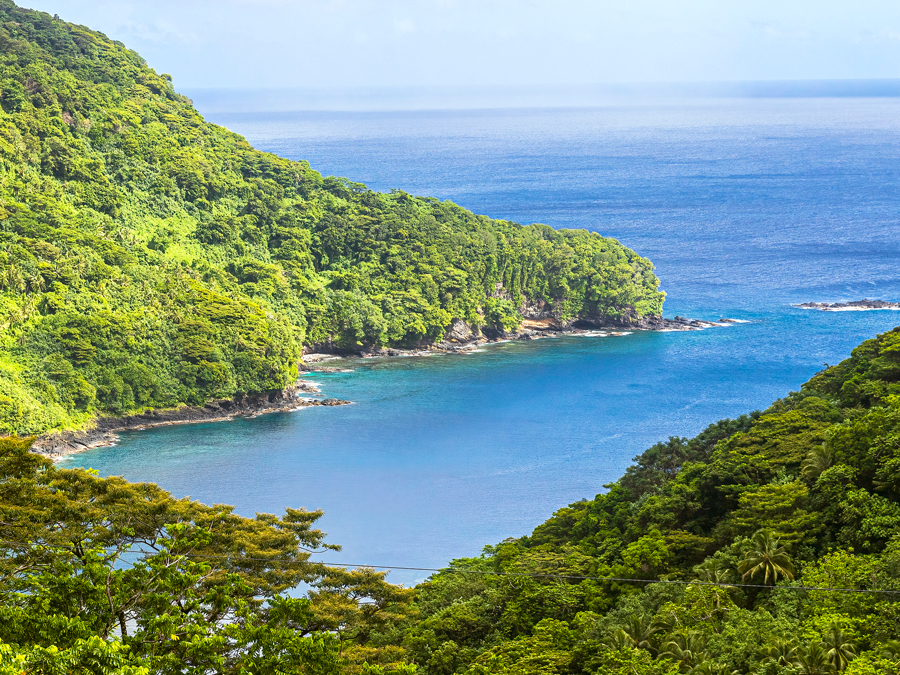
The only U.S. national park located south of the equator, the National Park of American Samoa occupies three islands — Tutuila, Ta’ū, and Ofu — in the South Pacific. This national park is actually closer to New Zealand than to the mainland United States. For those who do venture all the way here, the island chain beckons with enchanting coastlines, pristine coral reefs, rainforests, and volcanoes.
You can also gain fascinating insights into the traditions of Polynesia’s oldest culture. Outdoor activities here include snorkeling at postcard-perfect Ofu Beach and hiking through a cloud forest to the summit of Lata Mountain. The Homestay Program is an excellent way to experience the life of the island villagers.
1. Gates of the Arctic National Park and Preserve – Alaska (11,045 Visitors)

The only way to reach Gates of the Arctic National Park and Preserve is by bush plane or an arduous hike, so it’s no surprise that it’s the least-visited national park in the country. There are no roads, no trails, no designated campsites, and no cellphone service in this 8.4 million-acre wilderness north of the Arctic Circle, so meticulous planning is key.
The reward? Six designated Wild Rivers to float down, multiday hikes amid the dramatic Arrigetch Peaks, and unmeasurable tranquility on the shores of Walker Lake. Those not quite up for the trekking challenges can also glimpse this natural wonder from the comfort of a flightseeing tour.
More from our network
Daily Passport is part of Inbox Studio, which publishes content that uplifts, informs, and inspires.






